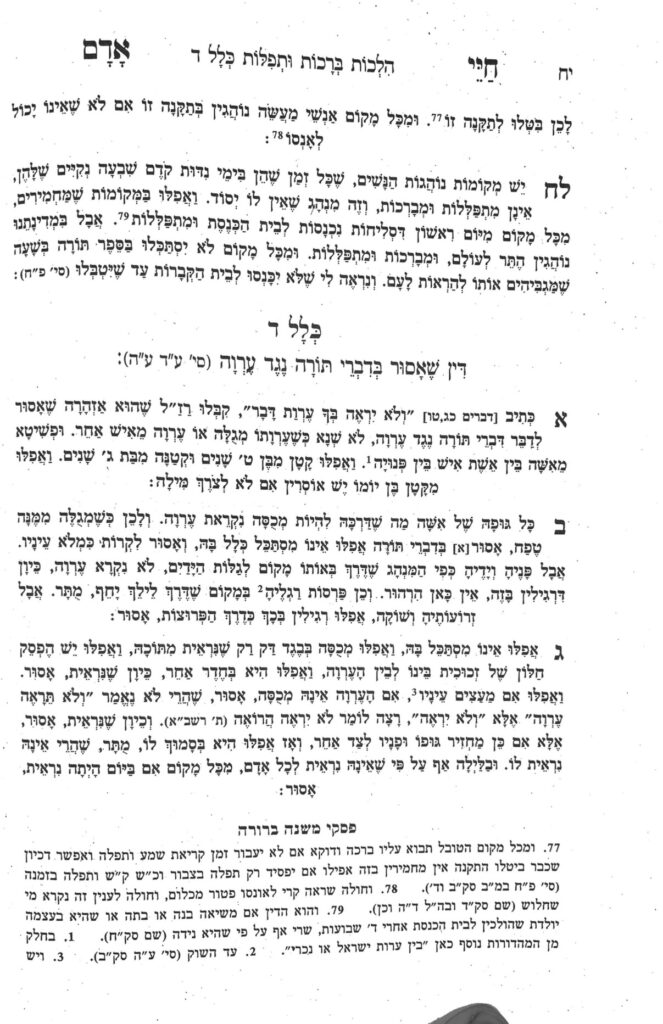We are beginning siman 3. The Chayei Adam writes that the issue of ervah being uncovered is a problem even if the person davening or learning is not looking directly at the ervah. It is also a problem even if it is covered with a thin garment through which the skin is still visible, behind glass, or in a different room. As long as the ervah is visible, it is a problem.
The Chayei Adam adds that even if the person davening or learning closes their eyes, it is still a problem, as the problem is not looking at the ervah, but the fact that the ervah is visible. The Chayei Adam points out that the pasuk says velo yireh (Devarim 13:15), meaning that the very fact it is visible is a problem, regardless of whether one is actually looking at it directly. In this halacha, the halachos of ervah differ from the halachos of tzoah. Regarding tzoah, we learned (shiur 1510) that tzoah which is visible but covered is muttar.
The Chayei Adam writes that since there is no din of machaneh (as opposed to tzoah, where tzoah could not be within the four amos which constitute one’s machaneh; shiur 1520), one can solve the issue by turning away from the ervah. It is not enough to turn one’s head; one must turn their body away as well.
The Chayei Adam writes that nightime does not make ervah muttar either. Although one may have thought that the cover of darkness would be sufficient (before electricity), the visible presence is a problem regardless of whether it can actually be seen.
The Mishnah Berurah brings an opinion, which is discussed in the Nishmas Adam as well, that regarding ervah derabanan (any non-primary ervah), we learned that the primary issue is that it will cause a person hirhur (shiur 1532). If so, if a person has their eyes shut, and is not affected by it, maybe Chazal did not impose the issur. Beshaas hadechak, the Mishnah Berurah paskens that one can rely on this solution. However, this thought process does not apply to the primary ervah. There, one must turn away.
Summary
- The issur of ervah applies when the ervah is in the presence and eyesight of someone davening or learning, even if it is in a different reshus or covered in a way the skin is still visible.
- For an ervah derabanan, one can turn their head and body away from the ervah and it is sufficient.
- Beshaas hadechak, by ervah derabanan, if one can not turn away, one can shut their eyes.



